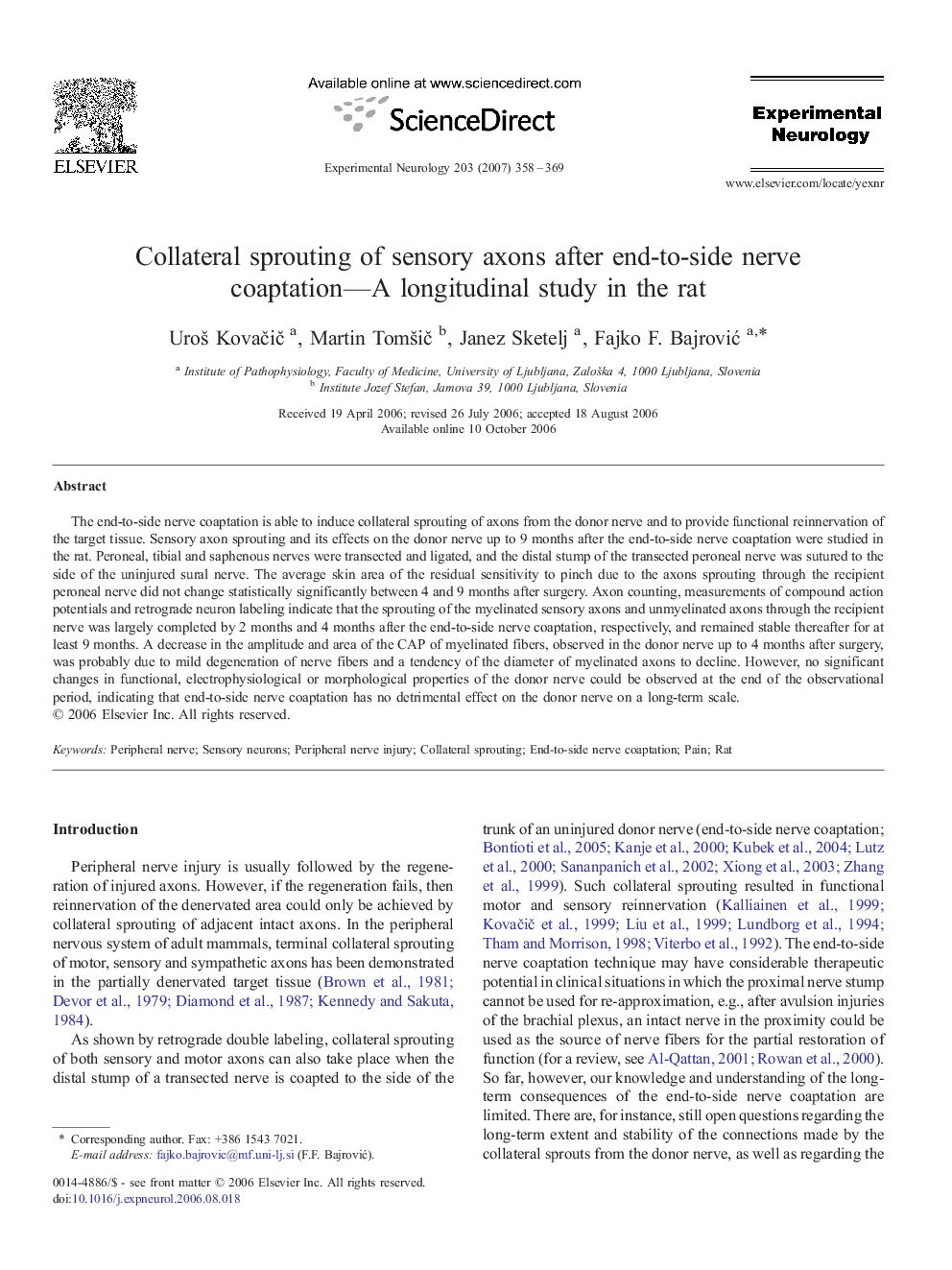| Article ID | Journal | Published Year | Pages | File Type |
|---|---|---|---|---|
| 3057293 | Experimental Neurology | 2007 | 12 Pages |
The end-to-side nerve coaptation is able to induce collateral sprouting of axons from the donor nerve and to provide functional reinnervation of the target tissue. Sensory axon sprouting and its effects on the donor nerve up to 9 months after the end-to-side nerve coaptation were studied in the rat. Peroneal, tibial and saphenous nerves were transected and ligated, and the distal stump of the transected peroneal nerve was sutured to the side of the uninjured sural nerve. The average skin area of the residual sensitivity to pinch due to the axons sprouting through the recipient peroneal nerve did not change statistically significantly between 4 and 9 months after surgery. Axon counting, measurements of compound action potentials and retrograde neuron labeling indicate that the sprouting of the myelinated sensory axons and unmyelinated axons through the recipient nerve was largely completed by 2 months and 4 months after the end-to-side nerve coaptation, respectively, and remained stable thereafter for at least 9 months. A decrease in the amplitude and area of the CAP of myelinated fibers, observed in the donor nerve up to 4 months after surgery, was probably due to mild degeneration of nerve fibers and a tendency of the diameter of myelinated axons to decline. However, no significant changes in functional, electrophysiological or morphological properties of the donor nerve could be observed at the end of the observational period, indicating that end-to-side nerve coaptation has no detrimental effect on the donor nerve on a long-term scale.
